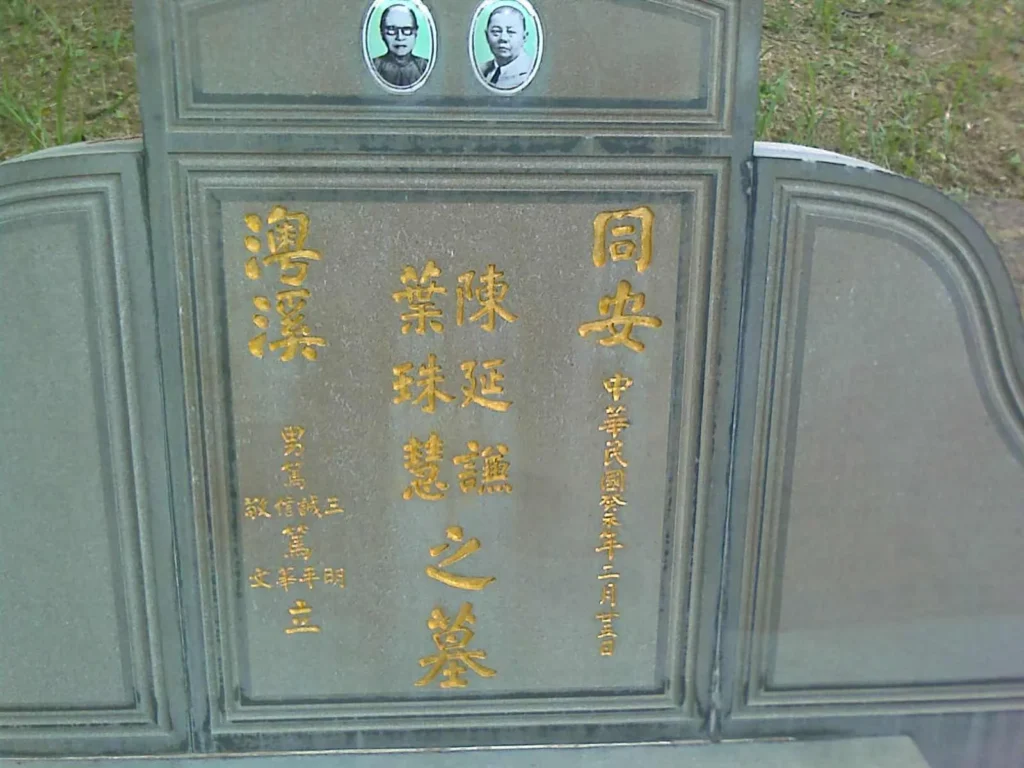27 TAN EAN KIAM 陳延謙
Tan Ean Kiam The Patriot and Philanthropist
TAN EAN KIAM 陈延谦 (1881–1943 ) Place of Ancestry: Tung Ann 同安
Tan was a successful man of enterprise, a fervent China patriot and an advocate of social causes.
As with other Chinese leaders on the Bukit Brown Wayfinder trail, Tan placed his bets on Dr Sun Yat Sen’s vision of a Republican China. He together with five leading businessmen – Lee Kong Chian, Lee Chin Tia, Chew Hean Swee, Lee Choon Seng and Yeo Kiat Tiow bought the villa now renamed Sun Yat Sen Memorial Hall In 1937 and donated it as a memorial to the cause of the 1911 republican revolution and to honour the comrades who fought for it.
In 1927, he was involved in the development of Katong East Coast Road, building shophouses, markets and residential houses. For a time this place was known as Ean Kiam District.
When the Sino-Japanese war broke out in July 1937, he headed the Hokkien division of the Chine Relief Fund started by Tan Kah Kee to fund the Kuomintang’s fight against the Japanese. And when WWII arrived on our shores, he chose to stay and was co-opted into the Oversea Chinese Association (OSA) to cooperate with the Japanese on managing the Chinese affairs under occupation. As a banker, he was involved in raising the $50 million ransom demanded by the Japanese, and in exchange, the Sook Ching operation would cease. Between 21 February to 4 March 1942, Chinese males between the ages of 18 and 50 were summoned to various mass screening centres, many were rounded up and massacred in various parts of Singapore. It was payback time for Japanese for the support of the China Relief Fund in the Sino Japanese wars, and also to exterminate potential resistance.
After weeks of humiliating wrangling, the OSA finally raised the $50 million with a loan from the Yokohama Specie Bank and it was Lim Boon Keng as head of the OSA who presented it to General Yamashit on 25 June, 1942.
Just under a year later on 30th March, 1943, Tan Ean Kiam at 62 years of age died of a heart attack. He had witnessed so much of suffering both in his birth country and his adopted country in war. He donated generously to both countries in numerous causes. Till this day, a eponymous foundation named after him funds scholarships.
Although he was deeply involved fund-arising for China, engraved on his tomb are a pair of couplets he wrote, which resolved for him and many sojourners like him, where is home?
Under the same quilt we have the same dream
同裘成一夢
Just bury me and let me have a deep sleep
安土好長眠
No need to bury me in my hometown
埋骨何须故里
For when you close the coffin lid, that will be my abode
蓋棺便是吾廬
(Translated by Raymond Goh )
From the photos on his grave, it was prepared for two but he is buried alone. His wife Yap Hwee Cho ( 叶慧珠) who was to be buried with him was a devout Buddhist from Fujian Province. After Tan’s passing under Japanese Occupation which must have been devastating as he was the head of the clan. she spared no effort in the promotion of Buddhism and built a family temple for meditation and prayers .
by Lee Chyen Yee


Recent Comments